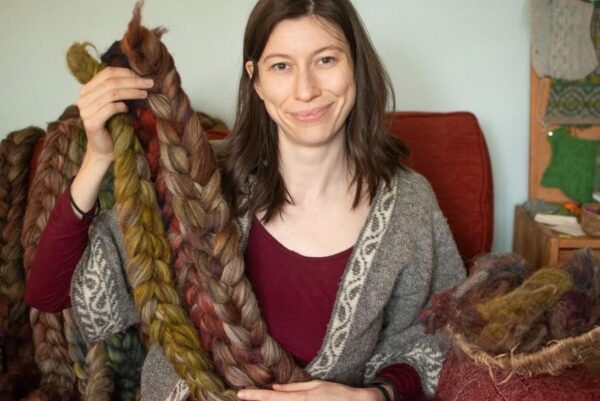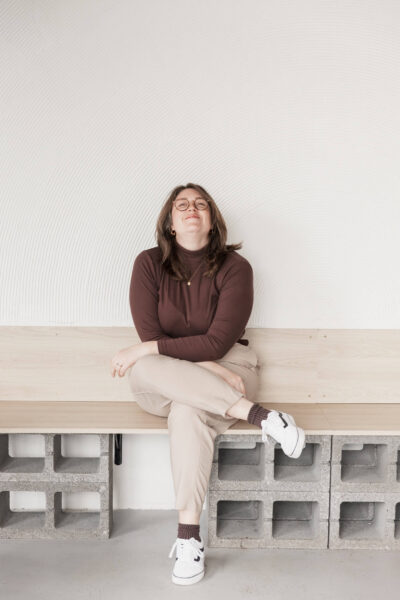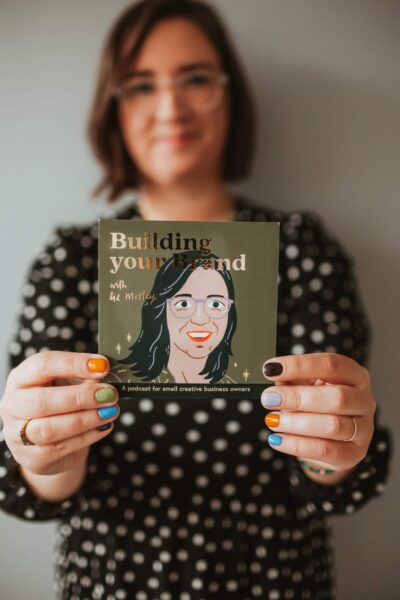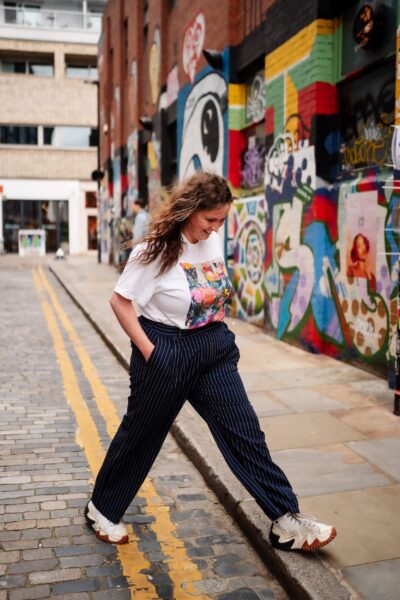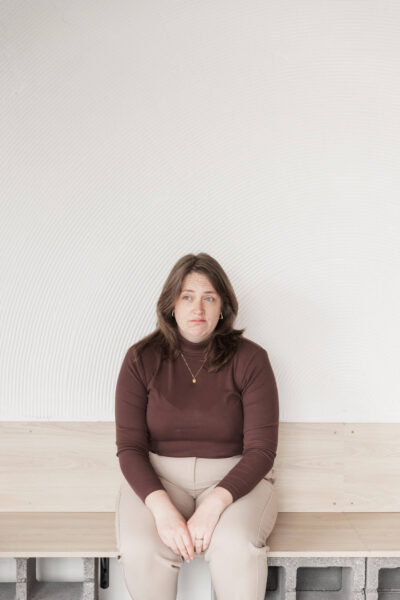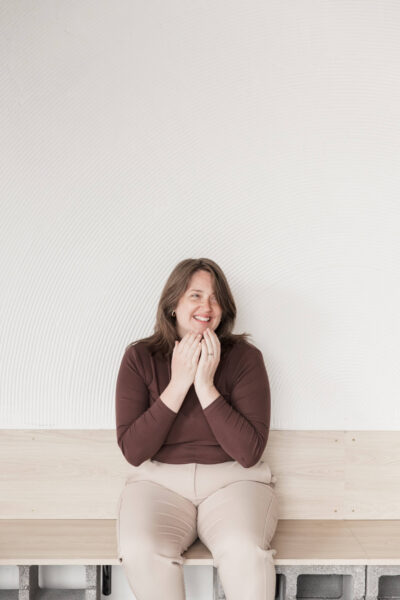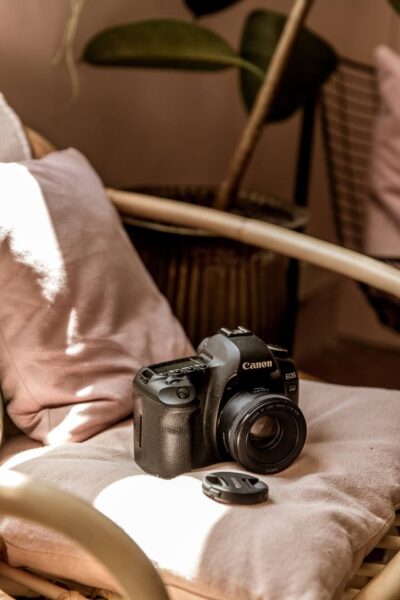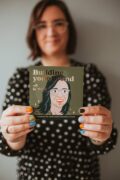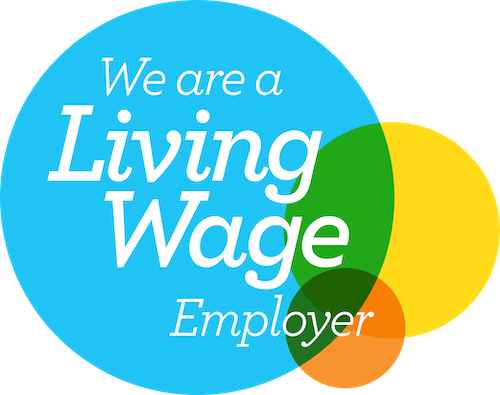You have no idea how many small business owners hate their website About page. I’m gonna go out on a limb here and say you might just be one of those peeps too. Hey bbz, hope you’re having a great day at work.
It’s been a few years now since I posted my own guide on how to write a killer About page, and looking back, I’d say it’s still a pretty darn good place to start – which is why I haven’t got a good enough reason to share an update.
But I still have ‘Something about website About pages’ on my list of blogging topics, so I’m flippin’ this lil lady on its head – and instead writing a nifty article on 9 things a website About page isn’t.
I also really, really enjoy the title of this blog because it defo feels like that’s bad English – but I’m a free spirit and it made me chuckle, so I’ll let the grammar pedants fret away.
1. Your website About page is not a personality crutch
I wanted to kick off with one of the biggest potential “ahahhhhh” moments about About pages.
The About page should never ever ever be the only part of your website where your curious visitor gets a lil dose of your personality – that pish should be everywhere.
One of the biggest unique selling points a small business has over its faceless corporate competitors is the ability to share an authentic personality.
And when I say authentic, I don’t mean in that Instagram manifestation nichey way, I mean you’ll actually be sharing a personality that belongs to a real life person.
That person being you.
Hey bbz, I hope your work day is still going well.
Your personality, including the things that make you chuckle (like blog titles that sound kinda chewy), the language you chose (like calling blog titles chewy), and the things you care about more than other people might care about (like finding excuses to write the word chewy over and over), is so ruddy valuable as a business asset.
It’s so valuable, that big-ass businesses spend an obscene amount of money paying very fancy fellas in even fancier suits (or I guess Yeezys these days) to craft their brand personality.
But you, you get that for free. So don’t you dare think about saving that juicy gubbins for a page as peripheral as the About page.
Be weird all over the place.

2. Your website About page is not a product or service page
A business’ About page should help the reader get to know that business, and no business can be summed up just by the things they sell.
As someone who has reviewed literally hundreds of small business websites, I most often see extreme versions of the About-page-product-page hybrids on single-product businesses.
This could be a single physical product, like a business with a revolutionary dog harness, or a digital/service product, like a membership or course.
If you’re popping some of your producty, servicey content on your website About page instead of product and service pages because you think it would increase the chances of your customer purchasing the product or service – then you are putting that very important content in the very wrong place.
The more humans have to go digging for info, the less likely they are to take in that same info. By spreading product/service info over multiple pages, you’re decreasing your chances of successful checkouts or enquiries.
Keep all of your product info on your product pages, and all of your service info on your services pages.
“But Aime, you just said to spread my Abouty-style personality all over my website you spoon!”.
Yes, I did. And I appreciate the affectionate sobriquet*.
We want your personality to be unmissable, which is why it should be part of your main commercial user journey – which is pretty much always:
- Land on website
- Find product/service that solves my problem
- Checkout/convert
As you can see, ‘Check our About page’ ain’t part of that primary journey, which is why it cannot be relied upon for a customer visit.
*yes, I did just pull this word from a thesaurus. Next time I’ll stick to spoon-level language.
3. Your website About page is not a sales pitch
If I can sum up your whole website About page as “we do things differently”, you might just have written a sales pitch. You’ve also just embraced one of my 5 common website copy clichés that drive me potty.
Like I said previously, an About page should tell me about the business whose website I am visiting. Yes, that can include your ethos and yep, I would love to see your values. But I also want the meat and bones, like the peeps who work for you, where you are, and why you do what you do.
A website About page that is all marketing waffle and no actual ‘About’ info is just a watered down sales pitch, which is fine – I suppose. I just think you can do much much better than fine.

4. Your website About page isn’t your Contact page
If there’s one website page I like writing about more than the About page, it’s the contact page. Seriously, check out 4 unmissable signs that your website’s contact page isn’t quite working (and how to fix it) or even, 7 essential features for your contact page design.
…And now I’ve just realised that I don’t think I’ve ever written a blog about homepage design, which seems like a colossal SEO faux pas on my behalf.
Oh, you wanna know more SEO? Well I have written about that too – extensively…
The opposite of a website About page which is all waffle and no bones, is one that is all bones and no waffles. Whilst there is nothing wrong with keeping a copy of your contact info on your About page – this should only be done in addition to having a Contact page.
Although counterintuitive, a lot of the time it’s not better to have one website page when you could have two. Sure, your contact info fits neatly onto your About page – but we’re not trying to save pixels here, they don’t grow on trees.
Wait, that analogy does not work at all.
If someone wants to contact your business, the first thing they are going to look for is your Contact page, if you don’t have a Contact page, you’re causing that digging-for-info again – leaving your customers less likely to get in touch at all.
5. Your website About page isn’t a CV or resume
Single-person service businesses, listen up to this one – because y’all love a CV-esque About page. I blame colleges and unis for this because (sidebar) the worst advice I have ever, ever heard about website design tends to come from lecturers and educators in the arts.
Photographers, fashion designers, illustrators, videographers, artists – I’m ever so sorry but the advice your course leader shared on building a portfolio website was probably really, really bad. I shall get into this topic another day though.
A CV About page is bad because it removes personality from the one page that can usually be relied upon to show personality. CVs should be factual, scannable and to-the-point to help people match you to a job description.
Your customers aren’t trying to match you to any description though. They just wanna know more about the person who is making or selling the thing they’re interested in.
Defo include your qualifications, but don’t let that take over the story about why you do what you do.
6. And your website About page isn’t an autobiography either
Controversial opinion incoming…
…I don’t give a fluff about your pet. I have no idea why 90% of about pages include a dog, cat or rabbit – but I don’t care. Now I’m not saying nobody cares, but I am saying that lots of people, like me, don’t give a fluff about stuff that isn’t to do with your business.
Just like a CV can be too bereft of story, your autobiography can be far too full of story too. As a rule of thumb, only include something from your history if its relevant to where your business is now, and understanding you as a business owner.
7. Your website About page isn’t a chance to tokenise team members/clients/stock models
It’s been a good few years since I’ve filled the role of ‘token woman’ for an employer who defo wants to look diverse without actually actively doing anything to recruit and support people from diverse backgrounds.
But it’s not been years since I’ve seen other organisations herald people from underrepresented backgrounds on their About pages.
A semi-personal anecdotal interlude
About 18 months ago I spotted a local industry network had relaunched their website. I’d personally had a super crappy experience with this industry network, including a particularly awful and memorable interaction with its Chair.
In my many years of being a member of this organisation via previous employers, I could count the number of people I had met at their events who were not white on one hand even though our city, Bristol, is rather diverse – with over 28% of its population within the Non-‘White British’ grouping.
When this organisation relaunched, their About page was now headlined by a single photo of a young black man. But, if you scrolled down, you could see a list of their team with headshots. Headshots of all white people. You could also see photos of their events, with all white people.
This organisation now looks to have made efforts to create a board that is more representative of its industry and location, but at the time – this added a massive ick factor. Especially for an organisation that already held an iffy reputation.
8. Your website About page isn’t a user journey endpoint
- Land on website
- Find product/service that solves my problem
- Checkout/convert
That’s your ideal user journey. Unfortunately humans are wayward and wild, so not everyone will keep to your plan – no matter how good your website design and content might be.
That means you need to encourage people who reach the end of your About page to rejoin that ideal journey with the simplest design trick ever – buttons.
Yep, buttons.
Just make sure the end of your About page tells your reader to do something next, like find a service, book a call, get in touch, or even go mild with a ‘follow me on Instagram’.
9. Your website About page isn’t a waste of time
In a perfect world, everyone would follow that three step user journey and nobody would visit your website About page.
But that ain’t the world we live in.
Whilst we want to do everything we can to keep as many visitors as possible on the most efficient route through our small business website, for some website visitors the About page is a crucial part of their journey.
Journeys like:
- Bloggers finding out about your story to write about you
- Press checking to see if you’ve contributed to publications before
- Panel organisers looking to see if you might belong to an underrepresented group they want to prioritise
- A collaborator checking to see if you work in their area
- A customer finding out if you share a specific value or piece of expertise
- A peer who half-remembers meeting you, but wants to check your face before sending an awkward email
The About page shouldn’t be an afterthought. This single piece of content is a business tool that allows you too add depth to your brand and fill in the gaps for heaps of very important user journeys. So get on it like a car bonnet, and tells peeps why you’re so darn good at what you do.

